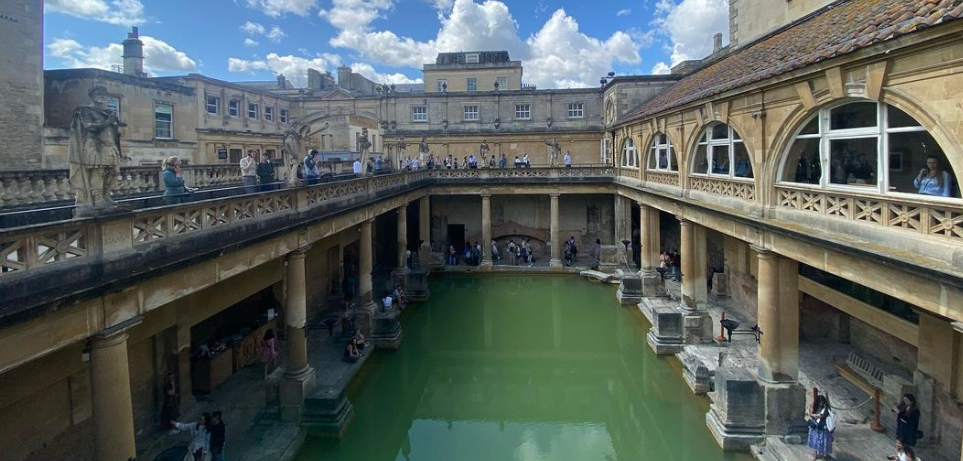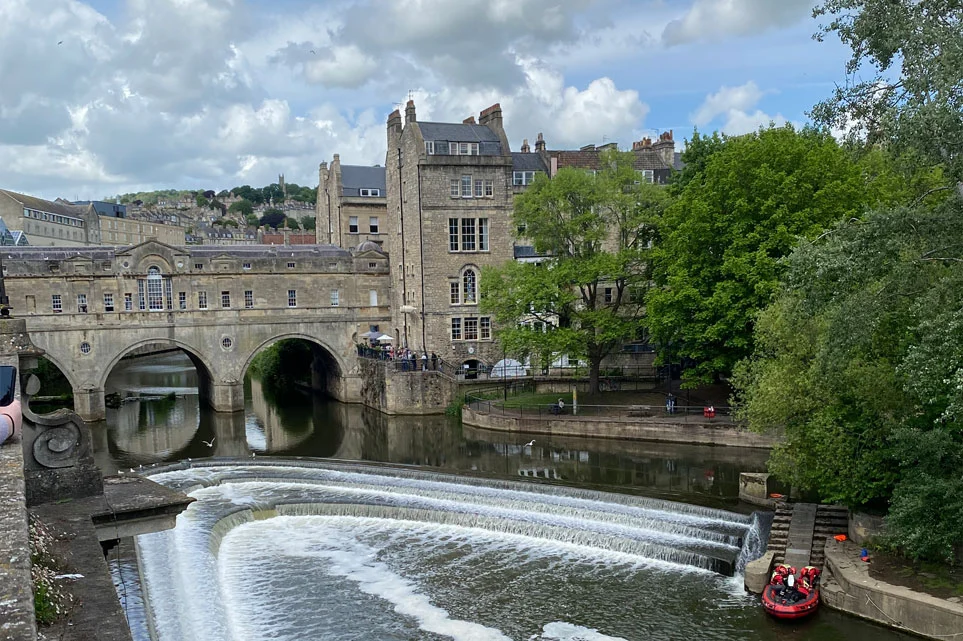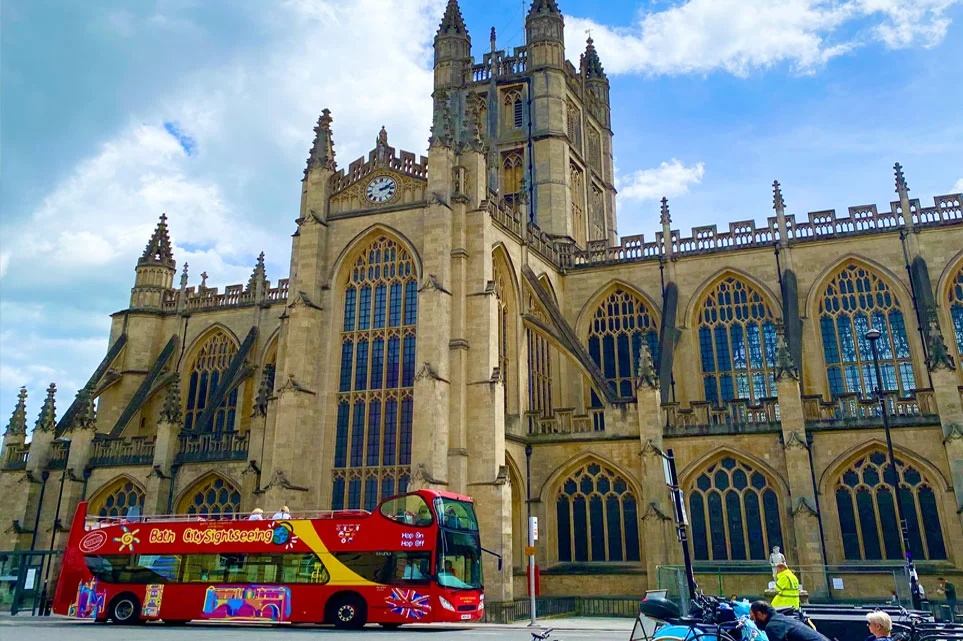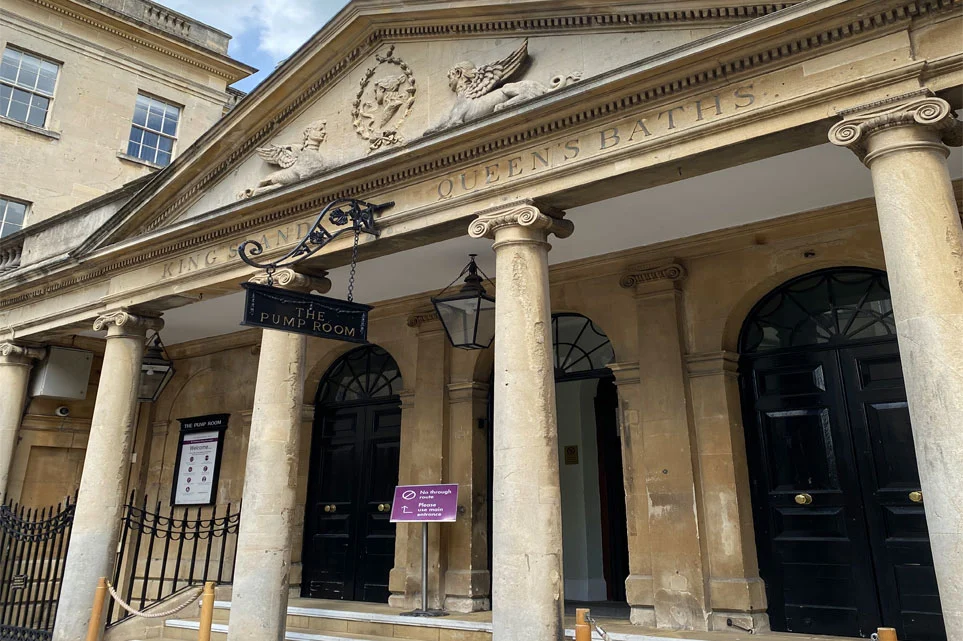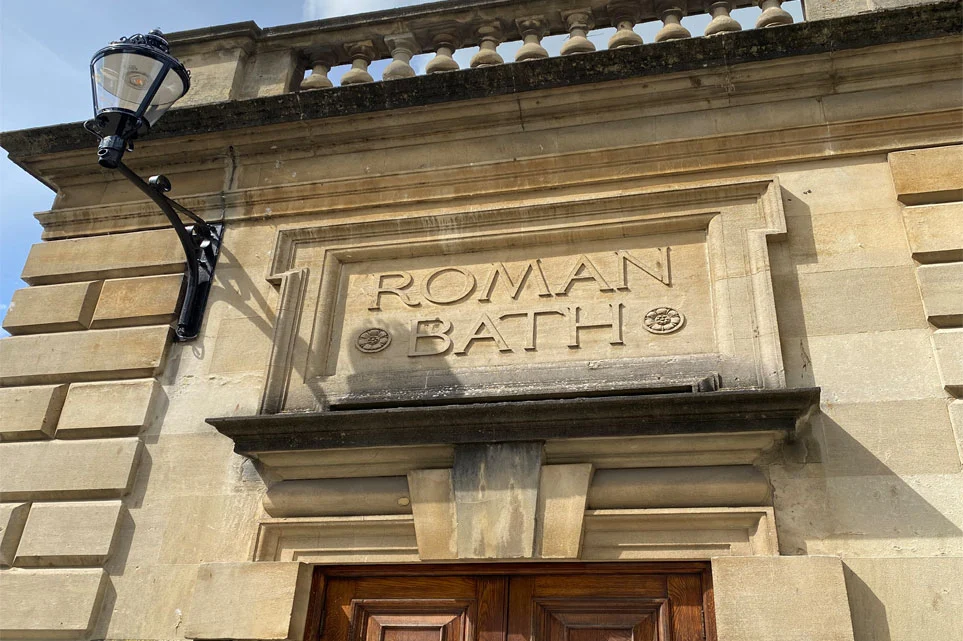Top 10 Things To Do In Bath: Essential Attractions in the Heritage City
Bath, the only city in the UK that’s a UNESCO World Heritage Site, is a treasure trove of experiences waiting to be discovered. From the impressively preserved Roman Baths dating back to 43 AD to Georgian architectural masterpieces, there’s a journey through time at every turn.
You’ll find hundreds of things to see and do here. Whether you’re a history enthusiast, a lover of classic literature, or simply someone who appreciates stunning architecture, Bath has something for you. So, let’s dive into the top ten things to do in this incredible city.
Remember, the best way to savour Bath’s attractions is to visit midweek. The city’s unique charm is more palpable then, and you’ll have the opportunity to explore at your own pace. Now, let’s embark on this exciting journey and discover what makes Bath so special.
Number 1: The Roman Baths: A Fascinating Journey Through History
A visit to the Roman Baths offers an insightful exploration into how life was in the city 2000 years ago. It’s not just a bathing complex but a world-class museum as well unravelling layers of turbulent history profoundly etched in its bellows.
The buildings we survey today, framed in regal allure, are mostly the remnants of the 19th century. Cast your gaze onto the terrace and you’ll find stoic statues of Emperors and Governors hailing from a bygone Roman Britain.
Take a step further into the realm of the ancient Romans, descending below street level. It’s there we uncover the Sacred Spring, Temple of Minerva and the Roman Bathhouse, the heart of this archaeological site.
As we delve deeper, we come across treasures from an era frozen in time. Could you fathom that this very site yielded over 12,000 Roman coins, buried beneath the echoes of centuries past? We don’t just hold in our hand priceless currencies of a lost society, but also everyday implements used by the Romans, welcoming us for an intimate walk through the corridors of their mundane lives.
The skeleton of a Roman man fondly referred to as the “resident Roman” coupled with the bronze head of the august goddess Minerva add authenticity and intrigue to our exploration. Indeed, what tale would history tell without its share of mystical curses? These were aplenty, inscribed on lead-tin alloy tablets seemingly discarded in the water as offerings or pleas to the deities.
Interestingly, many of these are spiteful pleas to Minerva, seeking justice for personal possessions pilfered from the bathhouse. Imagine standing at the very spot, reading off a curse, knowing full well it was thoughts of retribution that guided its creation over two millennia ago. Sends shivers down your spine, doesn’t it?
Regardless of your historical cravings, a visit to the Roman Baths serves a compelling platter of ancient anecdotes, artefacts and architecture. A worthy testament to human ingenuity, craftmanship and the relentless march of time, it truly stands out as the beacon of Bath’s heritage.
Number 2: Visit the Iconic Bath Abbey: A Majestic Architectural Marvel
Bath Abbey, with its hulking medieval façade and central tower, dominates the city centre. It’s been a site of worship since at least the 7th century. But the present cathedral mainly dates back to the 14th and 16th centuries. Inside, you’ll find fabulous fan-vaulted ceilings and dramatic stained-glass windows. The ornate façade on the west front is a sight to behold. Look out for angels climbing up and down ladders, a scene that appeared in a dream of the abbey’s builder, Bishop Oliver King.
The adventure doesn’t end there. Once I decided to take the challenge of climbing the 212 steps to the site’s top tower, the panoramic views of the city from there were nothing short of breathtaking. You also get a chance to learn about the history of the abbey’s clock and its famous bells along the way. And during the festive season, the Abbey is conveniently next to Bath’s winter markets. So, when visiting in December, it’s as if you are hitting two birds with one stone.
Moving on, there is something to be said about Bath’s exquisitely preserved Georgian architecture. Bath’s Royal Crescent is an unmissable destination for architecture lovers. This is a perfectly symmetrical arc of thirty terraced houses that overlooks Royal Victoria Park. It’s not just about the exterior façade. The incredibly detailed Bath Model, a grand 1:500 scale architectural model of the historic city centre, is a testament to the city’s heritage.
Whether day or night, the city skyline is forever defined by the beautiful Bath Abbey. Its 161-foot bell tower is visible from all around the city, a sight you wouldn’t want to miss. Visiting Bath would genuinely be incomplete without a stop at the Abbey. So take my advice: make sure it’s on top of your ‘things to do’ list, because Bath Abbey isn’t just a place. It’s an experience.
Number 3: Explore the Georgian Splendour of the Royal Crescent
Few destinations radiate the historical charm quite like the Royal Crescent. This iconic row of 30 uniform Georgian townhouses has been standing proud in the heart of Bath since the 1770s. And with its unchanged facade, it teleports you back to Regency England with ease.
As you walk along this curved feat of architecture, you’ll find each home teeming with stories of past residents. Notable mentions include artist Thomas Gainsborough and former British Prime Minister William Pitt the Elder.
While most townhouses are private, No.1 Royal Crescent offers a sneak peek into the lifestyle of affluent Georgians. Operating as a museum since 2013, it’s adorned with period furniture and authentic decorations from the late 18th century.
If you’re a fan of the popular drama Bridgerton, you’d even recognize the Royal Crescent as the home of the Featherington family. But even if period dramas aren’t your cup of tea, lounging opposite this majestic stretch of history in the parkland will captivate you.
A short five-minute stroll from here takes you to another Georgian wonder – The Circus. Designed by John Wood the Elder, it offers a full circle of architectural brilliance. Drawing inspiration from historic sites like Stonehenge and Roman architecture, it stands as another sought-after address in Bath.
So if you’re seeking a strong measure of history teamed with architectural splendour, ensure a visit to the Royal Crescent and its neighbours. It’s not just Bath’s famous landmark, it’s a slice of England’s unique story etched in stone. While here, make a stop at the quintessential Royal Crescent Hotel & Spa, relish some afternoon tea and experience pure elegance.
Lastly, walking along the Crescent, noticing the fine details, blending into its historic aura will truly immerse you in Georgian grandeur. The proximity to other architectural feats like The Circus and Pulteney Bridge only complements this experience.
So, shall we continue this journey of immersion into Bath’s history and move towards another unique destination?
Number 4: Step Back in Time at the Jane Austen Centre
Immerse yourself in the world of one of Bath’s most famous residents: Jane Austen. A visit to the Jane Austen Centre, nestled in an original Georgian townhouse, offers a unique connection to the author’s beloved city.
The Centre, designed to celebrate Austen and her timeless works, houses a permanent exhibition. It showcases the inspiration behind the novels that have captivated readers for centuries. Don’t miss the opportunity to fully embrace the Georgian era with a delightful photo session. You can dress in traditional clothing from Austen’s time and bring a piece of history to the present.
But that’s not all. While visiting the centre, indulge in the truly British experience of afternoon tea in the Regency Tea Room. Enhanced by a glass of champagne, this is a treat that simply can’t be missed. The centre opens seasonally, with an admission price of £12 for adults. But remember, a discount on admission is available with your Bath sightseeing ticket.
Nearby, make sure to explore the Fashion Museum, once located on the lower ground floor of the Assembly Rooms. Although currently closed, don’t let this discourage you. The Fashion Museum is not gone, it’s simply moving to a new location in Bath’s city centre. This renowned museum, rich with 18th-century history and a haven for fashion enthusiasts, will soon welcome visitors again in its new location.
Let’s not forget the Assembly Rooms themselves, originally constructed for 18th-century entertainment. According to the National Trust, these historic rooms are undergoing redevelopment for a new immersive experience. Although currently closed to visitors, they will soon provide a fresh lens through which to view Bath’s rich past.
Finally, let’s note that Austen’s influence goes beyond the walls of the Jane Austen Centre. She moved from rural Hampshire to Bath in 1801 and resided in a number of homes across the city. Trace her steps and imagine the streets through her eyes, adding depth to your understanding of the city that inspired her timeless masterpieces. As we journey through Bath, Austen’s spirit continues to guide us.
Number 5: Discover the Spectacular Pulteney Bridge and Weir
Tucked away in the picturesque city of Bath is the spectacular Pulteney Bridge. Completed in 1774, this architectural marvel is a seamless blend of Georgian grandeur and Tuscan charm. Echoing the design of Florence’s iconic Ponte Vecchio, it’s one of only four structures of its kind in the world. Lined with shops and eateries, the bridge connects central Bath to the land across the River Avon. Whether it’s the start or end of your evening stroll, you’ll find yourself captivated by its timeless elegance.
Just downstream, the bridge’s graceful arches meet the curved cascades of the weir. This enchanting scene, especially when lit up at night, offers a dash of magic to the city. With the Parade Gardens offering stunning views of the bridge, it’s a sight that’s hard to resist.
The bridge and weir are not only remarkable sights but also key cogs in the city’s historical wheel. Pulteney Bridge was built in the vibrant 1700s to stitch together parts of Bath divided by the River Avon. With shops cosily nestling inside it, the bridge is unique – a distinctive blend of history and commerce.
Of course, no journey of discovery in Bath is complete without getting a bird’s eye view of the city. And there’s no better place for this than Alexandra Park. Nestled atop a wooded hill, this retreat offers panoramic views of the city and countryside. You can drive up, catch a bus, or take the exciting zigzag pathway. The hike is worth every step when you’re greeted by stunning vistas at the top.
For those interested in understanding more about Bath’s rich heritage, don’t miss the venues’ newest addition – the Discovery Centre. Based in the ancient vaults beneath the Abbey floor, peek into the intriguing life in the Abbey throughout the centuries. Next door is Bath’s World Heritage Centre, an excellent resource for learning more about this extraordinary city – it’s beauty, history, and heritage.
Number 6: Immerse Yourself in Art at the Holburne Museum
In the heart of Bath lies a jewel of art history the Holburne Museum. Established in 1882, it’s the city’s first public art museum. With a significant collection of decorative and fine art, it presents an elegant assortment of items ranging from Renaissance bronzes to miniature carvings and period furniture. Noteworthy works by Thomas Gainsborough, Johan Zoffany, and Francesco Guardi adorn the museum walls making it a must-visit for art lovers.
Bath’s Holburne Museum isn’t just about remarkable art. The building itself is a sight to behold. Formerly the Sydney Hotel, its façade now graces the Netflix series Bridgerton as Lady Danbury’s home. Step inside, and one of its grandest spectacles awaits – a former hotel ballroom that now houses porcelain and silver items, masterfully arranged under a dazzling chandelier.
I’ll let you in on a little secret. The Museum’s café overlooks the last surviving 18th-century pleasure garden in Britain. Enjoying a cuppa while taking in this view is an experience that never grows old.
Holburne Museum’s collection is the result of Sir William Holburne’s European travels and keen artistic eye. After inheriting a whopping family fortune, Sir William embarked on an 18-month quest for breathtaking art. His collection, which included bronze sculptures, silver, porcelain, and Dutch landscapes, has since become the soul of the museum. The museum now houses an impressive 2000 additional items, offering an ever-evolving view of the art world.
Did I mention it’s free to enter? Yes, despite the treasure trove it boasts, accessing this artistic wonderland won’t cost you a penny. Plus, the Museum holds workshops throughout the year for adults, youngsters, and children.
Art, history, and a bit of popular culture – the Holburne Museum packs quite a punch. But remember, there’s much more to explore in Bath, so let’s dig deeper and discover what other wonders this enchanting city holds.
Number 7: Relax and Rejuvenate at Thermae Bath Spa
Thermae Bath Spa is your gateway to tranquillity. Nestled right across the street from the Roman Baths, it stands as a testament to the area’s thermal legacy that’s captivated people for thousands of years. Here, you have the unique chance to bathe in the same thermal waters the ancient Romans did.
In 2006, a captivating modern glass-faced structure was added to this renowned spa, forming a delightful architectural amalgamation with the original Georgian-era buildings. This blend of old and new is a symbolic representation of how the Thermae Bath Spa marries history and tradition with modern wellness trends.
One of the spa’s highlights is the New Royal Bath. This main bathing area comprises a breathtaking open-air rooftop swimming pool with an unmatched view of the city. It’s supplemented by an indoor pool, two thermal baths, two steam rooms, and an ice chamber. Those with a penchant for historical settings will also find the original 18th-century hot bath fascinating.
Rounding it off is the wellness suite that stands beside the garden. This secondary relaxation space exudes serenity away from the stimulating buzz of the main spa complex. But remember, while the Roman Baths no longer permit public bathing, Thermae Bath Spa brings the same natural hot spring water right to your fingertips.
Number 8: Indulge in Retail Therapy at Milsom Street
If you’re in for a dash of retail therapy, Milsom Street wins the day. It’s home to an assortment of independent boutiques each boasting their unique scenic flair. At Milsom Place, you’ll find even more offerings. Peppered with a variety of stores and restaurants, it provides a fantastic undercover shopping experience.
Another notable mention is Bartlett Street, a historic shopping destination. Here, you’ll stumble upon the Bartlett Street Antiques Centre, brimming with quaint collectables and specialist dealers. But don’t let shopping take your entire attention – take a moment to immerse yourself in the architectural beauty of Bath Street as well.
No thoroughfare in Bath quite compares to Walcot Street. This tantalizing stretch is your one-stop-shop for all things artisanal. Here at the Fine Cheese Shop, taste buds will be treated to an expansive array of cheeses. When passing by, make sure to gaze at the stunning stone faces, 30 of them, hand-carved into the great wall of faces.
Don’t miss grabbing a book or two from Mr. B’s Emporium of Reading Delights, an iconic independent bookstore and a golden feather in Bath’s hat.
Leaving the main retail area of SouthGate behind, embrace the quirks of the local trade at Walcot Street. A rummage through the antique stores might reveal a hidden treasure, and the local artisan cheesemonger is always generous with samples.
If you’ve got an inclination towards arts, the glassblower might just be your next stop. The reclamation yard is bound to inspire your next upcycling project. Show off your artistic prowess and create your own personalised bauble or paperweight at the renowned glassmaker’s workshop. If your creation doesn’t shape up as expected, there’s always a selection of ready-made jewellery and glassware to choose from.
Round off your shopping extravaganza with a quick pop into the souvenir shop at the centre. It’s a treasure trove of Austen souvenirs, including the coveted “I Love Mr Darcy” T-shirts. Up at the top of the Georgian house, the cosy Regency Tea Room awaits to welcome you with a comforting cup of tea.
Number 9: Take a Stroll in Victoria Park: A Serene Oasis
Finding yourself in the bustling heart of Bath, you may yearn for a bit of tranquillity. If that’s the case, then Royal Victoria Park is a must-visit sanctuary. With beautifully manicured botanical gardens, it provides the perfect backdrop for a leisurely stroll. Notably, this park is not just for grown-ups: it houses a modern children’s play area, a skate park, crazy golf, and a model boating pond for the younger ones.
You’ll find the park peppered with historical monuments. An obelisk to the Crimean War and the Temple of Minerva, which was originally set up at Wembley for the British Empire Exhibition in 1926, are among the park’s treasures. Moreover, the Temple was relocated here a year later. Interestingly, Queen Victoria never returned to Bath after her initial visit. It’s rumoured that she carried a grudge against Bath due to an unkind comment about her ankles made by a local.
Following the gentle meandering paths will take you to another picturesque spot, Prior Park Landscape Garden, sitting majestically on a Palladian estate. That particular estate was erected by the business magnate and pioneer of postal reform, Ralph Allen. Its tranquillity and exceptional views make it an ideal destination for picnics, leisurely walks, or simply taking in the serene environment.
Adding a bit more thrill to your visit, you might choose to take the challenging Bath Skyline stroll. Spanning six miles, this route rewards you with some of the best panoramas of Bath.
Moving to a different part of Bath, there’s Alexandra Park, a fantastic location that offers wooded views across the city. Arriving at Beechen Cliff, this park provides boule/Petanque fields, playgrounds, picnic areas, and other conveniences that make for a splendid visit.
Let’s navigate our way back into Bath’s city centre and wander into some of the shopping streets waiting to reveal their unique offerings.
Number 10: Enjoy a Literary Experience at the Bath Literature Festival
If you’re a fan of literature, you can’t miss out on the Independent Bath Literature Festival. Organised by Bath Festivals, this event stands as a major highlight in the city’s cultural calendar. It allows me to immerse myself in a world of creativity that’s packed with a wide range of genres, from poetry to contemporary fiction.
During the festival, you’ll find an opportunity to delve into the minds of your favourite authors during their readings, a chance to exchange ideas with fellow book enthusiasts, and even workshops to hone your illustration skills. I’ve always found these activities stimulating and enriching, whether I’m a participant or an observer.
For the little ones, Bath also hosts the Bath Children’s Literature Festival during autumn. Known as the largest literature festival for kids in Europe, it provides an avenue for your young ones to engage in art, crafts and games, whilst connecting with literature. It’s also a fantastic platform to expose your kids to the magic of story-telling through author readings.
Parallel to the Bath Literature Festival, the city is home to the Bath Fringe Festival. If diversity and creativity are your cup of tea, this festival satiates your artistic appetite with an eclectic mix of performances across multiple venues in Bath.
Mind you, Bath’s reputation as a cultural hub isn’t limited to literature. The city travels back in time every September for the Jane Austen Festival. Taking a stroll around the city centre, I find myself transported back to the Georgian era, surrounded by bonnets, fans and breeches, a constant reminder of Bath’s rich history.
And finally, the Bath International Music Festival that showcases an array of music genres, featuring over 2000 performers from across the world in a single, spectacular night of music. It’s a must-attend, and the party is absolutely free.
In essence, Bath is a city where culture and creativity thrive. It’s an experience that I treasure, with every event offering a unique perspective of the city’s vibrant heritage.
Conclusion: Bath – A City Steeped in History and Culture
There’s no denying Bath’s allure. It’s a city where history and culture intertwine, offering a unique blend of attractions for all tastes. From the ancient Roman Baths to the architectural masterpieces like the Royal Crescent and The Circus, Bath is a city that never fails to impress. It’s not just about the past though. Bath’s vibrant cultural scene, with festivals celebrating literature, music, and more, ensures there’s always something happening. So whether you’re a history buff, a culture vulture, or simply looking for a city break with a difference, Bath has it all. I’m certain you’ll leave Bath with memories that will last a lifetime. It’s been a pleasure sharing my top 10 things to do in Bath. Now it’s your turn to explore and discover your own highlights in this remarkable city.
Frequently Asked Questions
Is 1 day enough in Bath?
Yes, one day can be sufficient to see the primary attractions in Bath. However, to fully appreciate its charm and wander through its ancient streets at a leisurely pace, two or three days would be ideal.
What is the notable street in Bath?
The Royal Crescent, Milsom Street, and The Circus are among Bath’s most celebrated streets, known for their iconic Georgian architecture.
Is Bath a good place for shopping?
Indeed, Bath hosts a unique blend of independent boutiques and stylish high-street brands, making it a popular destination for shoppers. From clothing, jewellery and books to art, homeware, and food and beverages, Bath caters to diverse shopping needs.
How much time is required to explore Bath?
Two full days are generally sufficient to explore Bath at a comfortable pace. The city centre is compact, making it easy to get around on foot. An additional day can be considered for a relaxed exploration or a side trip to nearby places such as Bradford-on-Avon or Wells.
How can I make my trip to Bath more entertaining?
To add spark to your Bath exploration, you could participate in local festivals and cultural events, relax in the city’s various parks or undertake a literary trail in honour of the renowned author Jane Austen. The city is also perfect for a fun shopping spree or a leisurely stroll in its stunning Georgian streets.

